Top 10 Banks In World
Financial institutions that receive deposits from people and other entities and utilize those funds to issue loans, make investments, and generate profits are available for a variety of banking operations.
Based on the sort of business they engage in, banks can be classified into several groups. Private citizens and companies can use the services that commercial banks offer. Individuals and families can access credit, deposits, and money management services through retail banking. Forex trading, Deposits, and cash withdrawals, currency exchange, and wealth management are just a few of the many tasks that banks carry out. Additionally, they act as a bridge between borrowers and depositors by offering credit facilities to those who wish to borrow using the money that clients deposit with them.
Banks generate money by levying interest fees on loans; they benefit from doing this by levying fees that are larger than the fees they charge on client deposits. They must, however, abide by the rules established by the national government or central bank.
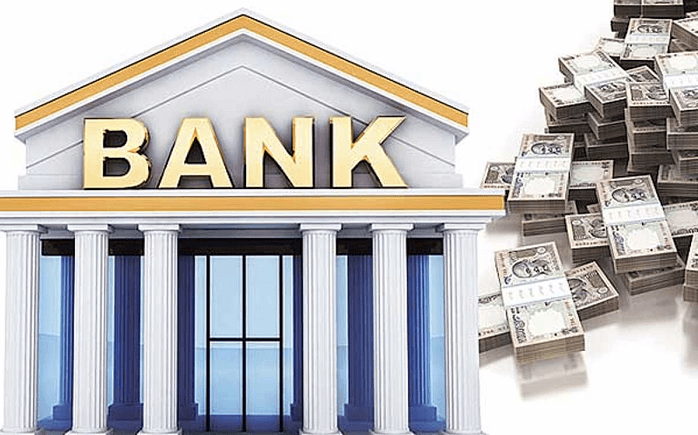
Below are the most common types of bank include;
Commercial Banks
The most prevalent kind of bank is a commercial bank. They offer a range of services to both people and private enterprises, including business loans, deposit acceptance, and basic investment products. Additionally, commercial banks provide merchant services, treasury services, insurance plans, retirement products, global trade services, and other financial services. They generate income by offering business loans to private and public borrowers and collecting interest payments from them as well as by charging service fees.
Credit Union
A Credit Union is a form of a bank that accepts membership applications from a limited group of people. It is run on the principle of people assisting others and is member-owned. In the past, credit unions offered services to people who were either local community members, churchgoers, staff members of a certain business or institution, etc.
Credit unions are able to provide their members with more individualized and affordable banking services because of their ownership structure. Compared to banks, credit unions may provide greater interest rates because of their smaller size of operation, and clients can establish stronger bonds with bank employees. The activities of credit unions are constrained, and consumer deposits are less easily available.
Investment Bank
Investment banks provide business customers access to capital markets so they may raise money for growth. They assist businesses in raising money on the stock and bond markets to pay for their growth, acquisition, or other financial ambitions. They can make mergers and acquisitions easier by locating prospective target firms that fit the buyer's requirements.
Investment banks generate revenue through advising corporate customers, trading on financial markets, and acting as clients' representatives in acquisitions and mergers. Large U.S. investment banks includes Bank of America, Merrill Lynch, Goldman Sachs, and J.P. Morgan, to name a few.
The Top 10 Banks In The World
1. Industrial And Commercial Bank of China Ltd.
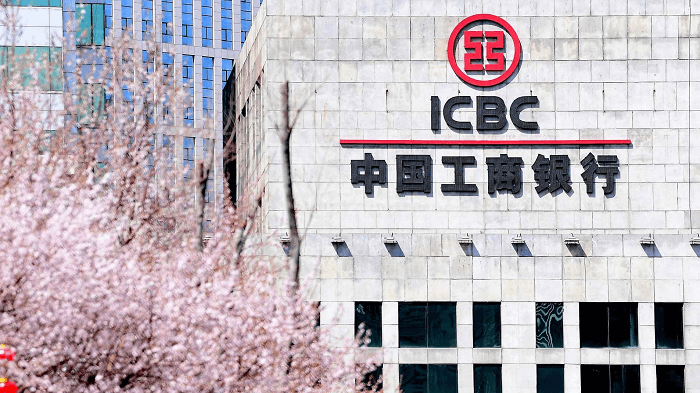
Industrial and Commercial Bank of China is a Chinese state-owned commercial bank with its headquarters in Beijing. It was established in 1984. ICBC is a global bank that offers financial and commercial banking services. China-based ICBC Ltd. specialises in offering banking and associated financial services.
Corporate banking, personal banking, and Treasury are the primary three business sectors for the bank. The Corporate Banking division offers businesses, governmental organisations, and financial institutions loans, trade financing, deposits, corporate finance, custody, and other relevant financial goods and services.
Individual consumers can obtain loans, deposits, bank cards, personal finance, and other associated financial goods and services from the Personal Banking section. Money markets, securities investing, self-service and dealer foreign exchange trading, and derivative financial products are all included in the Treasury category. The business is active in both domestic and foreign markets.
2. Jpmorgan Chase & Co.
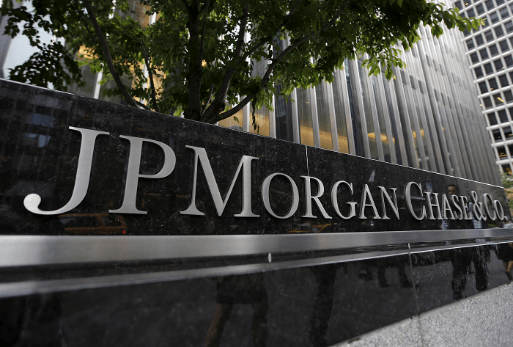
JPMorgan Chase & Company, an investment bank with its main office in New York City, was founded in 2000. The company offers services for individuals, small enterprises, commercial banking, processing financial transactions, and asset management. Retail banking and other financial services are offered by JPMorgan Chase & Co.
The company offers services such asset management, treasury and securities services, investment banking, commercial banking, private banking, card member services, and home financing. Business organisations, institutions, and private citizens are all served by JP Morgan Chase.
There are four operating segments in addition to a corporate division. Corporate & Investment Banking, Consumer & Community Banking, Commercial Banking, and Asset Management are the company's segments. The Consumer & Community Banking division provides services to individuals and companies through bank branches, ATMs, online, mobile, and telephone banking.
The Banking and Markets and Investment Services businesses of the Corporate & Investment Bank sector provide investment banking, prime brokerage, market-making, investors, treasury and security services to businesses, financial institutions, governments, and municipalities. Financial services including loan, treasury services, investment banking, and asset management are offered by the commercial banking segment. Wealth management and investing are included in the asset management section.
3. Japan Post Holdings Co. Ltd.
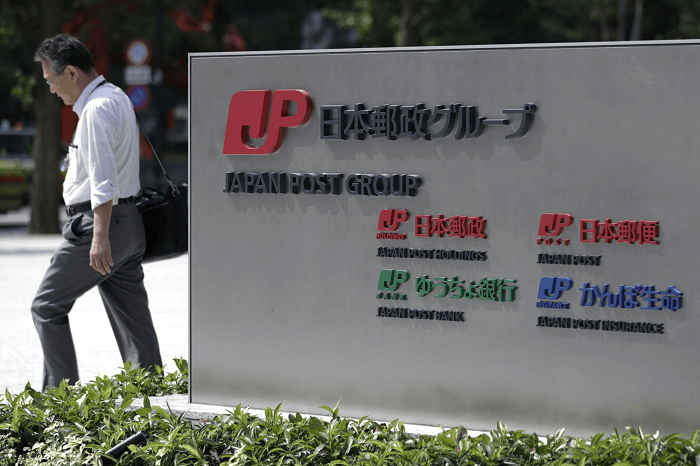
Banking, postal, and insurance enterprises that are part of the Japan Post Holdings Co., Ltd. conglomerate are managed by this company. The business was established in 1871, and it has its headquarters in Tokyo, Japan. Post Office, Postal and Domestic Logistics, Banking, as well as Life Insurance International Logistics, are the five key reportable segments that make up this industry.
Along with counter services for mail and logistics, the Post Office section also provides banking, insurance, financial services, merchandise, and real estate. In the international market, the International Logistics category offers third-party logistics, express, and forwarding services. Banking services fall under this category.
Services for life and non-life insurance are covered by the insurance section. Hospital and lodging enterprises are included in the others section. The Life Insurance division accounts for most of its income. The corporation conducts hotel and hospital businesses, in addition to acting as a holding company and offering group-shared services.
4. China Construction Bank Corp. :
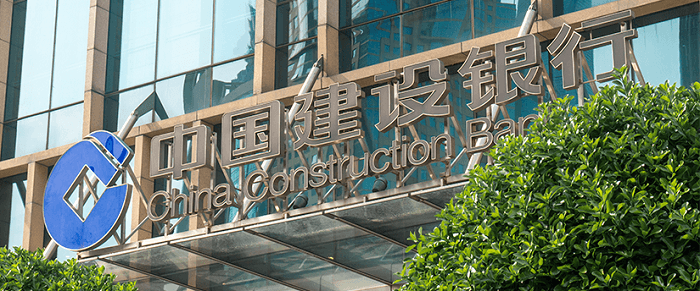
One of the "big four" banks in China and one of the largest banks in the world is China Construction Bank (CCB). It was established in 1954 and has offices all throughout China, with its main office located in Beijing. Additionally, it has locations in Luxembourg, Sydney, London, Seoul, Frankfurt, and New York .
The Bank conducts business through its corporate banking division, which includes, among other things, corporate deposits, corporate credit loans, asset custody, enterprise annuities, trade financing, foreign settlement, international financing, and value-added services, as well as its personal banking division, which includes, among other things, personal loans, personal deposits, personal bank cards, private bank facilities, foreign exchange trading, and gold trading services.
The capital business division also conducts business. Bank runs its activities in both domestic and international markets. The CCB was the second-largest public firm in the world as of 2016 according to Forbes.
The CCB, formerly known as the People's Construction Bank of China, changed its name in 1996 and has approximately 14,000 branches worldwide that offer both retail and corporate banking services. Over recent years, CCB has advanced its "Three Main Strategies," supporting financial technology, inclusive lending for small firms, and housing rental businesses. By market value, it is the sixth-largest bank in the world, with 14,510 domestic locations and more than 200 international affiliates in 31 different countries and regions.
5. Bank Of America Corp.
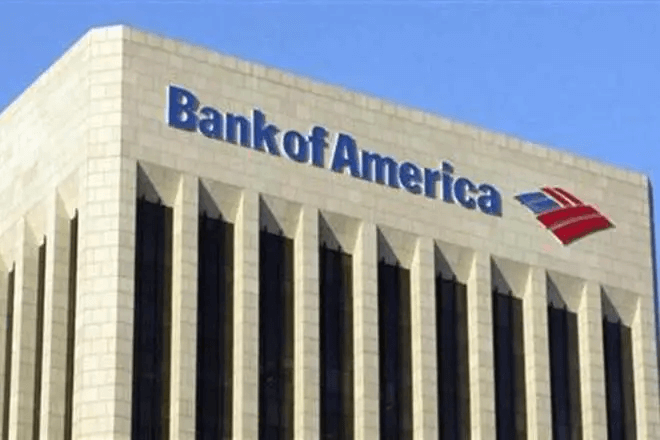
In 1998, BankAmerica Corporation and NationsBank Corporation merged to establish Bank of America Corporation. With more than 4,200 retail banking facilities in 21 states along with the Districts of Columbia, it serves as the fourth bank in the country. In terms of market share for deposits, the corporation dominates Georgia, Florida, Texas, California, North Carolina, and Washington. Commercial banking, consumer banking, investment and global corporate banking and asset management make up Bank of America's four primary business divisions.
The company offers consumers in 48 states and 38 nations throughout the world financial goods, services, and solutions through these sectors. By providing a wider range of banking, investing, and insurance offerings and services, Bank of America aims to develop strong, long-lasting connections with its customers.
It also wants to add value to these relationships by providing clients with financial solutions that take into account their entire banking relation and financial condition. With client managers coordinating the delivery of a wide range of products and services, such as (but not limited to) treasury management, commercial lending, acquisitions and mergers advisory services, risk management, debt and equity capital raising, the company's relationship-based approach also benefits middle-market and big corporate clients.
6. Agricultural Bank Of China Ltd.
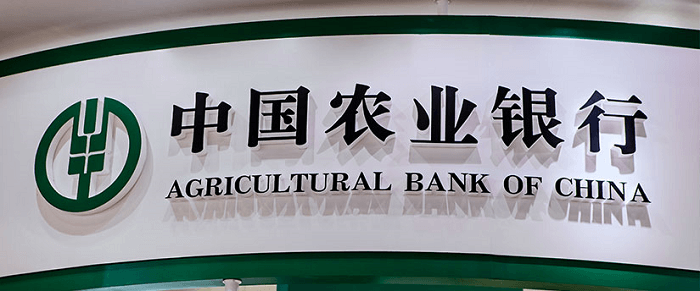
Agricultural Bank Of China Ltd. is a commercial bank based in China. ABC has existed since the founding of the People's Republic of China in 1949 and has gone through several formation and abolition processes. Farmers Bank of China and Cooperation Bank, two banks in the Republic of China, combined in 1951 to become Agricultural Cooperation Bank, which ABC considers to be its parent.
But in 1952, the bank was combined with the People's Bank of China, the nation's national bank. Four business segments make up the majority of the Bank's operations. The Corporate Finance area includes investment banking, trade financing, cash management and settlement, small and microbusiness finance, deposit and loan enterprise, among others.
The personal finance category operates in the credit card, private banking, and personal loan and deposit sectors. The Treasury division manages investment portfolios and operates in the money market. The asset management section operates businesses related to asset custody, pensions, precious metals, and financial services. The company's headquarters are in Beijing, China, and it was established on July 10th, 1951.
7. Credit Agricole SA

France-based Credit Agricole SA is a banking organisation. One of the top European banking organisations and the main source of funding for the French economy is Crédit Agricole S.A. The financial firm Credit Agricole concentrates on retail banking, savings management, and corporate and investment banking. The company offers retail banking services both domestically (Crdit Lyonnais) and internationally. Through a network of regional and neighbourhood banks and branches, it provides banking and insurance services.
It offers asset management, private banking, insurance, and assets under management. The business provides services such investment capital, investment, normal finance, and market banking services, as well as specialised bank financing, stock operation, and mergers and acquisitions advice. Retail banking for individuals, retail banking for small companies, private and corporate banking are the four business segments that make up its retail banking LCL.
The firm offers financial goods and services to private consumers, microbusinesses, corporations, and municipal governments both in France and overseas. With 49 million clients, 1.2 million stockholders, and 7.4 million mutual shareholders, Crédit Agricole Group is a trustworthy, friendly bank.
8. Wells Fargo & Company
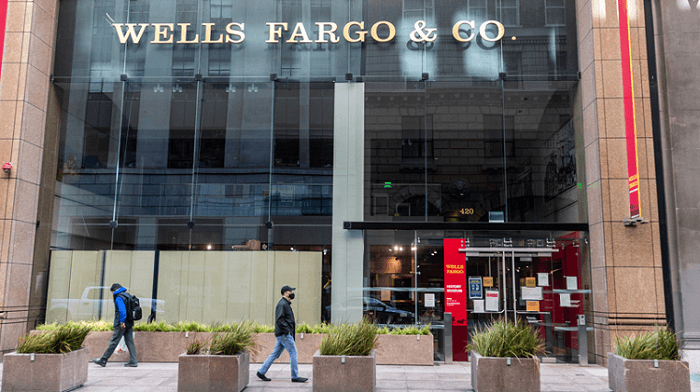
Wells Fargo & Company is a provider of financial services. Through banking locations and workplaces, the Internet (www.wellsfargo.com), and other distribution channels, the Company offers a diverse range of banking, investment, and mortgage products & services, as well as commercial and consumer finance, to people, businesses, and institutions in the states, the District of Columbia, and in foreign nations.
In addition to savings and checking accounts, debit and credit cards, auto, mortgage, and home equity loans, among other consumer financial services, the company also offers small business financing. The Company also provides investment management, private banking, financial planning, and fiduciary services. The Company furthermore offers organisations financial solutions through a variety of goods and services, including as asset-based lending, trade finance, letters of credit, typical commercial loans and lines of credit, treasury management, and investment banking services.
It has roughly 4,800 retail bank branches and is present in around 25 of the top 30 US areas, serving about 64 million people for consumer banking and lending. When Wells Fargo was established in 1852, it quickly became successful in the stagecoach industry. With nearly $1.9 trillion in assets, Wells Fargo & Company (NYSE: WFC) is a world-leading provider of financial services. It proudly provides services to one in three American homes and more than 10% across all middle market businesses.
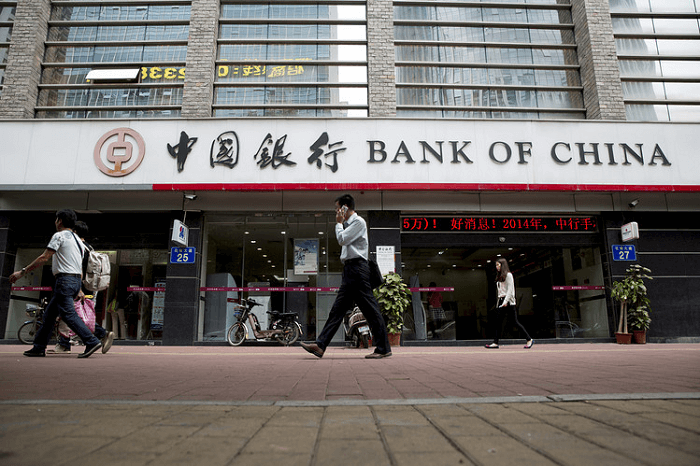
9. Bank Of China Ltd.
Incorporated in 1912, Bank of China is one of the Big Four joint-stock commercial banks in China. It is China's bank with the greatest global focus. The Chinese government owns 64.04 percent of the bank's shares.
A supplier of personal and business banking, investment banking, treasury, private banking and wealth management, insurance, as well as other financial solutions, Bank of China Ltd. (BOC) is a division of Central Huijin Investment Ltd. Accounts and deposits, including current accounts, fixed deposit, and gift deposits, loans for overseas education, homes, syndicated lending, export supplier and buyer, card products including debit and credit cards, and life & non-life insurance make up its portfolio of offers.
In addition to its core financial services, BOC also offers domestic and international remittance, agency bill payment, trade services, telephone banking, RMB settlement, cash management, annuities. In addition to the Americas, the bank also operates in Europe, Asia Pacific, Africa, and the Middle East. The headquarters of BOC is in Beijing, China.
10. Citigroup Inc.
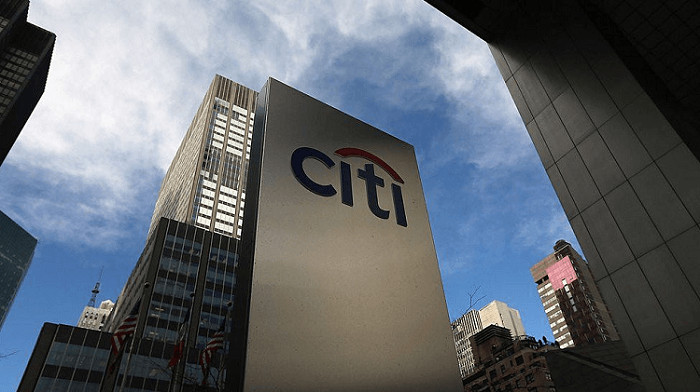
Citigroup Inc. is a holding corporation for various financial services. The company's headquarters are in New York, NY, and it was established in 1812. In addition to consumer banking and credit, brokerage, investment and corporate banking, trade and securities services, and wealth management are just a few of the financial services and products the company offers.
Personal Banking and Wealth Management (PBWM), Legacy Franchises, Institutional Clients Group (ICG) and Corporate/Other are some of its operational business sectors. The ICG section comprises of banking, services, and markets that offer a variety of wholesale bank products and services to clients in the business, institutional, and public sectors. The company's personal banking and wealth management (PBWM) sector serves individuals and small business clients in the United States with traditional financial services and credit cards. Consumer banking in Asia, small business and medium market banking in Mexico, and legacy holdings assets are all included in the division known as Legacy Franchises.
It functions through the following divisions: Institutional Clients Group, Corporate and Other, and Global Consumer Banking Through retail banking, commercial banking, Citi-branded cards, and Citi retail services, the Global Consumer Banking business offers conventional banking services to retail consumers. The Institutional Clients Group section offers a comprehensive range of wholesale banking services and products to corporate, institutional, public sector, and high-net-worth clients across the world. Corporate financing, investment banking and consulting services, private banking, stock and fixed income research, foreign currency, fixed income and equity sales and trading, prime brokerage, derivative services, and cash management are all included in this area.
In Closing
In conclusion, banking is an crucial part of our daily lives. The financial system must be followed by all law-abiding persons. The banking system serves as an essential foundation for the nation's financial system and overall economic structure. It gives the market as well as the businesses a foundation.
In essence, we may say it is the method through which the nation's citizens channel their financial resources. In the contemporary economy, the banking system is crucial. Individuals' funds are gathered by banks, who then lend them to manufacturers and businesspeople. Bank loans help the economy.